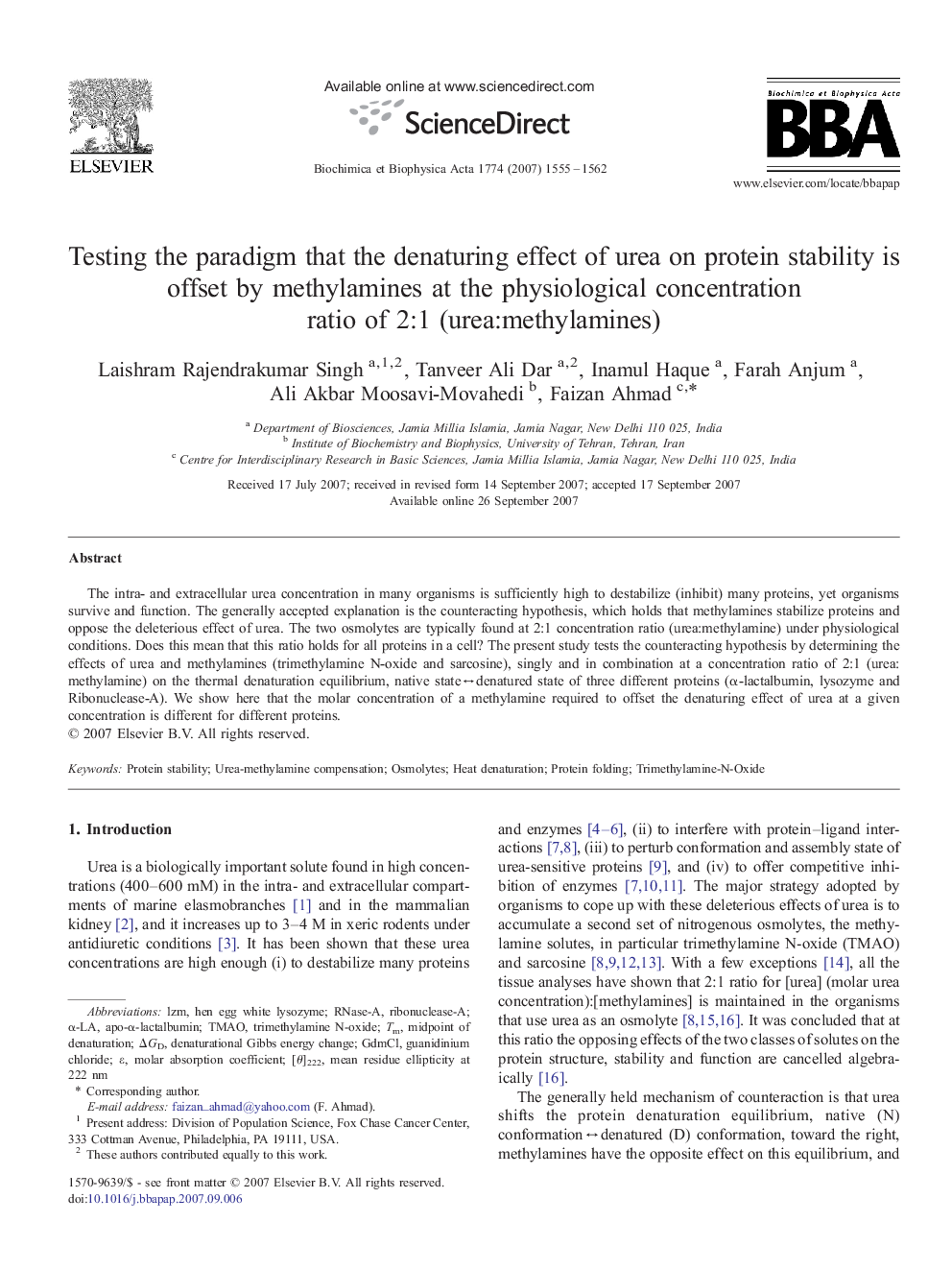| Article ID | Journal | Published Year | Pages | File Type |
|---|---|---|---|---|
| 1179423 | Biochimica et Biophysica Acta (BBA) - Proteins and Proteomics | 2007 | 8 Pages |
The intra- and extracellular urea concentration in many organisms is sufficiently high to destabilize (inhibit) many proteins, yet organisms survive and function. The generally accepted explanation is the counteracting hypothesis, which holds that methylamines stabilize proteins and oppose the deleterious effect of urea. The two osmolytes are typically found at 2:1 concentration ratio (urea:methylamine) under physiological conditions. Does this mean that this ratio holds for all proteins in a cell? The present study tests the counteracting hypothesis by determining the effects of urea and methylamines (trimethylamine N-oxide and sarcosine), singly and in combination at a concentration ratio of 2:1 (urea:methylamine) on the thermal denaturation equilibrium, native state ↔ denatured state of three different proteins (α-lactalbumin, lysozyme and Ribonuclease-A). We show here that the molar concentration of a methylamine required to offset the denaturing effect of urea at a given concentration is different for different proteins.
